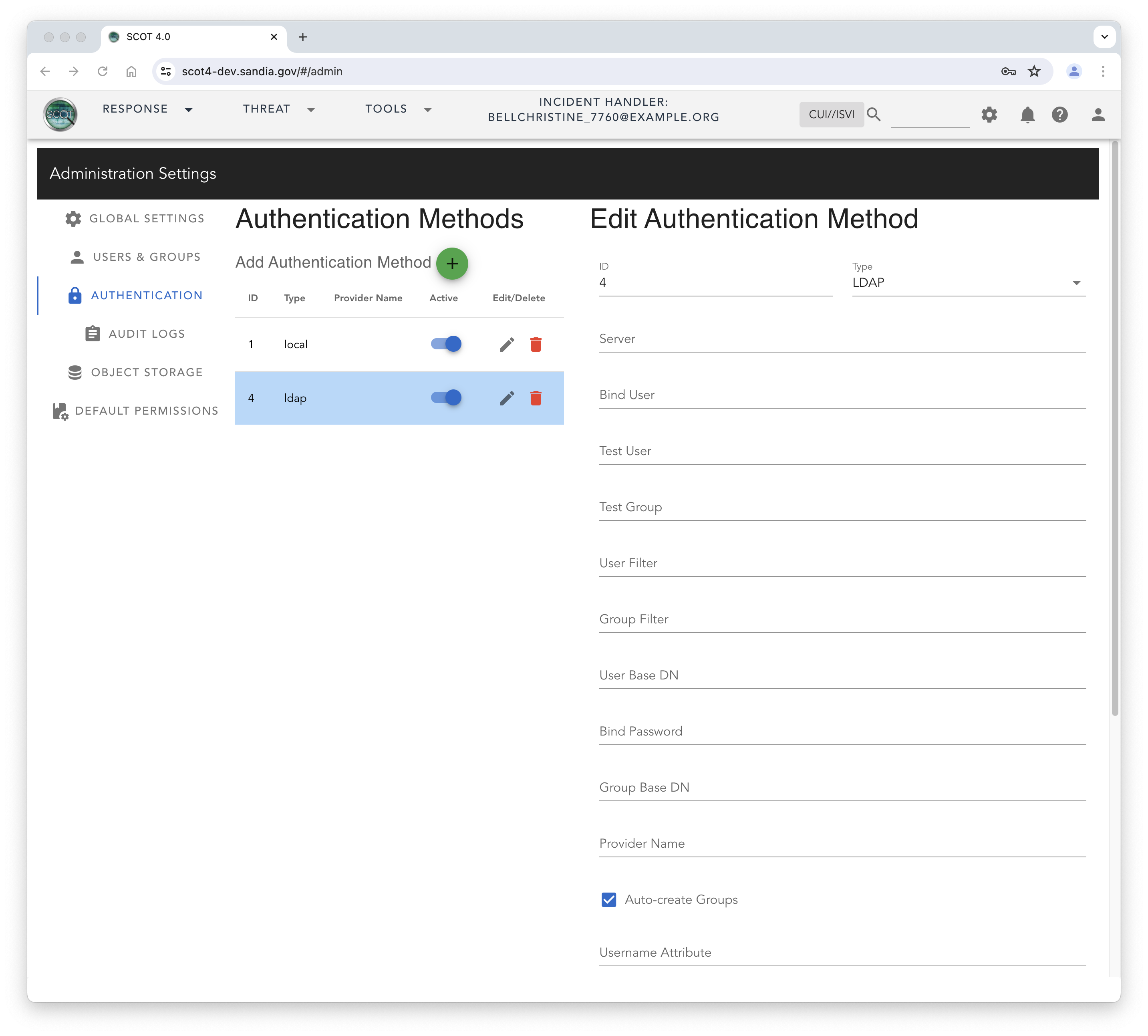LDAP Authentication
LDAP Authentication is set up by an admin user by going to the Administration Settings->Authentication panel.
Setting up LDAP for authentication can be very tricky, and it is recommended that you work with your local LDAP administrator to set the following settings.
- Server
- The address of the LDAP server
- Bind User
- the user with permission to bind to LDAP and perform queries
- Bind Password
- password for the Bind User
- Test User
- A user that can be looked up to test user queries
- Test Group
- A group that can be looked up to test group queries
- Group Base DN
- the DN for retrieving a set of groups. E.g.
ou=groups,ou=orgname1,dc=dcname1,dc=dcname2 - Group Filter
- LDAP group lists can get rather large and when the total length of that list exceeds 1k characters, some LDAP implementations truncate the list. By applying a filter, you can help ensure that the group list is under that limit. We recommend picking a prefix to attach to all the groups you want to uses with SCOT. So if you pick a prefix like wg-scot, all your SCOT related groups would look like: wg-scot-response, wg-scot-mgmt, etc. The corresponding group filter would be
(| (cn=wg-scot*)) - User Base DN
- The base search domain for users
- User Filter
- The filter to use when searching for users
- Provider Name
- A name that identifies this authentication instance
- Auto-create Groups
- When set, all discovered ldap groups will be created as roles in SCOT
- Username Attribute
- The ldap attribute containing a user’s username (default: “uid”)
- Group Name Attribute
- The ldap attribute containing the group’s name (default: “cn”)
- User Email Attribute
- The ldap attribute containing a user’s email address
- User Group Attribute
- The ldap attribute on a user containing that user’s group memberships
- Group Member Attribute
- The ldap attribute on a group containing that group’s users
- User Full Name Attribute
- The ldap attribute containing a user’s full nam
